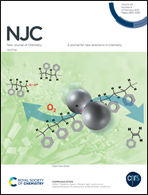The synthesis, biological evaluation and fluorescence study of chromeno[4,3-b]pyridin/quinolin-one derivatives, the backbone of natural product polyneomarline C scaffolds: a brief review
Abstract
Coumarins (natural, as well as synthetic) are an important class of heterocycles having immense potential for industrial and medicinal applications. Coumarin-fused heterocycles, mainly pyridine or quinoline, possess a plethora of biological attributes such as anti-bacterial, anti-fungal, and anti-cancer properties, in addition to being fluorescence active. This review aims to assess the past and current status of research works associated with these compounds in light of the vast body of work on different synthetic methodologies, bioactivity and fluorescence studies by looking specifically at chromeno[4,3-b]pyridin/quinolin-one derivatives, the backbone of natural product polyneomarline C scaffolds, during the past two to three decades. The synthesis of chromeno[4,3-b]pyridin/quinolin-one derivatives by the construction of either pyridine, or quinoline, or coumarin rings via classical reaction protocols, ultrasound-mediated reactions, microwave-mediated reactions, organo-catalyzed reactions, transition metal-catalyzed reactions, metal-free ionic liquid-mediated reactions and green reaction protocols starting from suitable precursors has been reported in the literature. This review also aims to be a prospective resource for the uninitiated work towards the development of new synthetic strategies, exploring the newer domains of biological and the fluorescence activity studies of chromeno[4,3-b]pyridin/quinolin-one derivatives.
![Graphical abstract: The synthesis, biological evaluation and fluorescence study of chromeno[4,3-b]pyridin/quinolin-one derivatives, the backbone of natural product polyneomarline C scaffolds: a brief review](/en/Image/Get?imageInfo.ImageType=GA&imageInfo.ImageIdentifier.ManuscriptID=D0NJ04761A&imageInfo.ImageIdentifier.Year=2021)
- This article is part of the themed collection: 2021 Focus and Perspective articles


 Please wait while we load your content...
Please wait while we load your content...